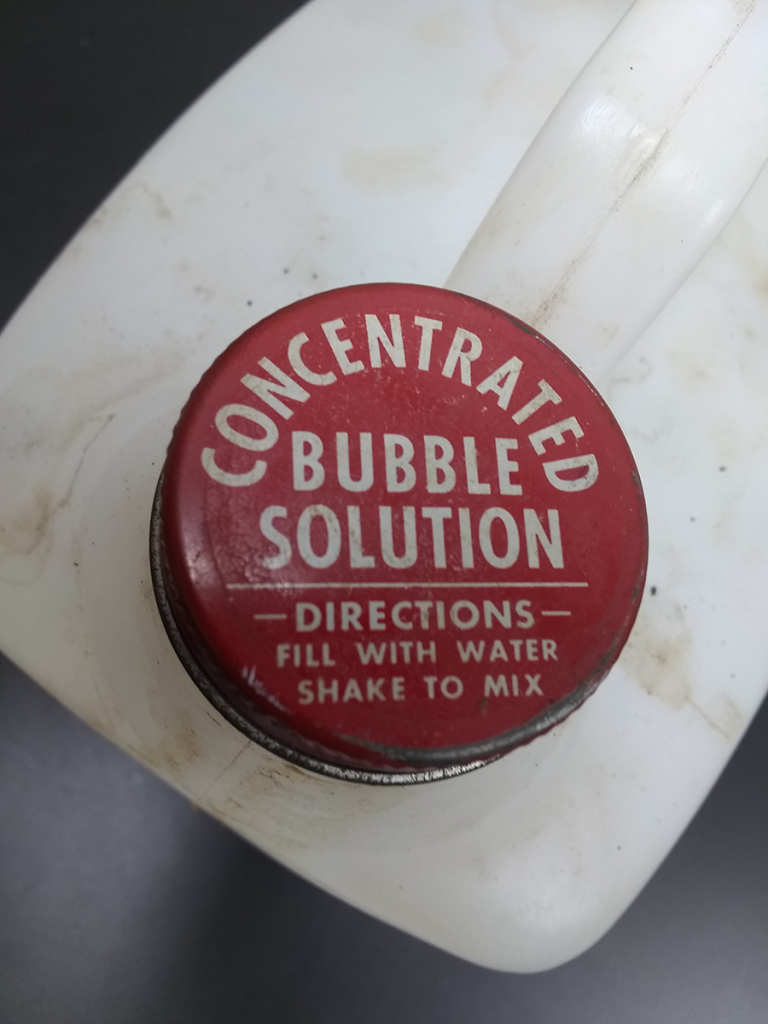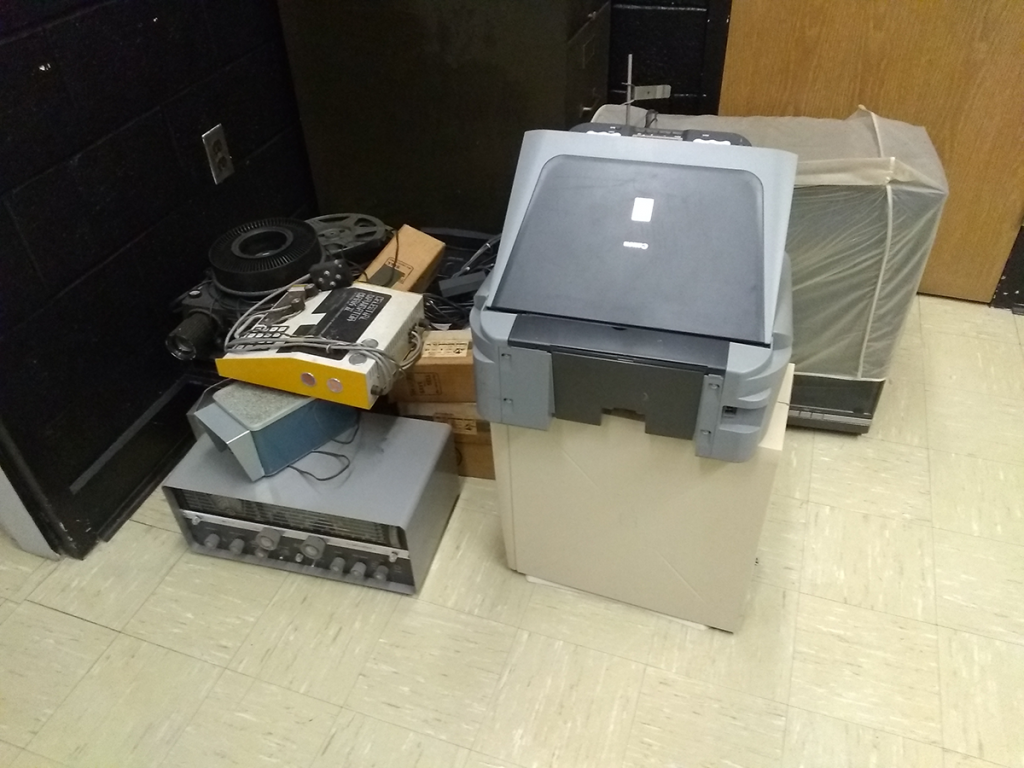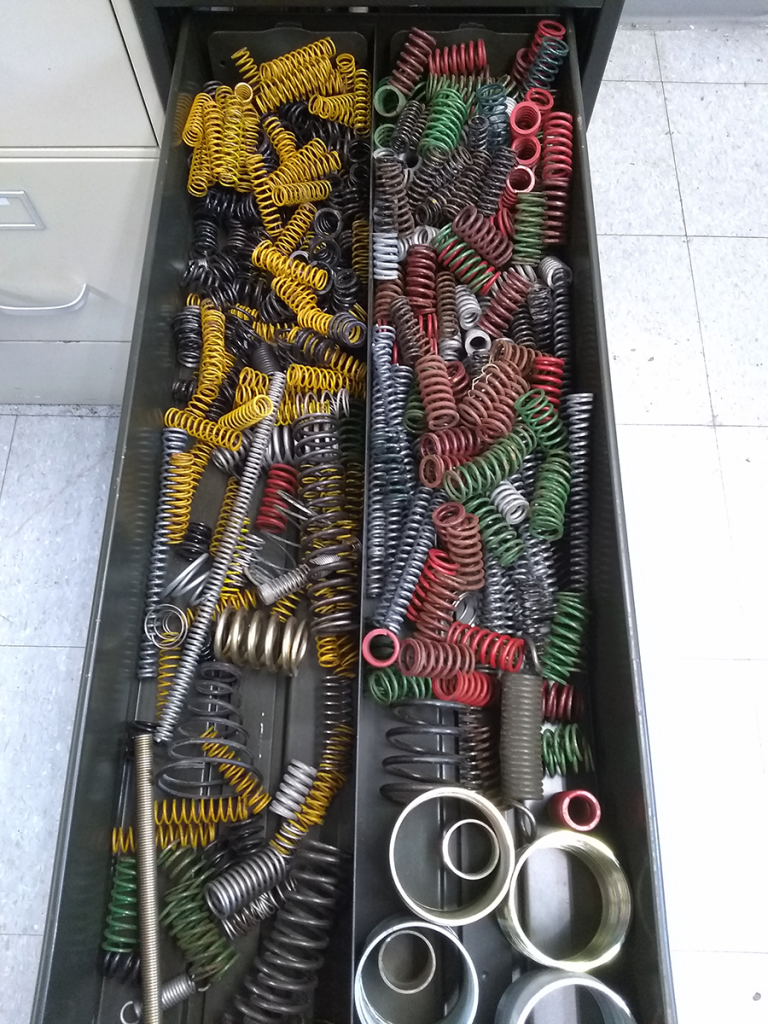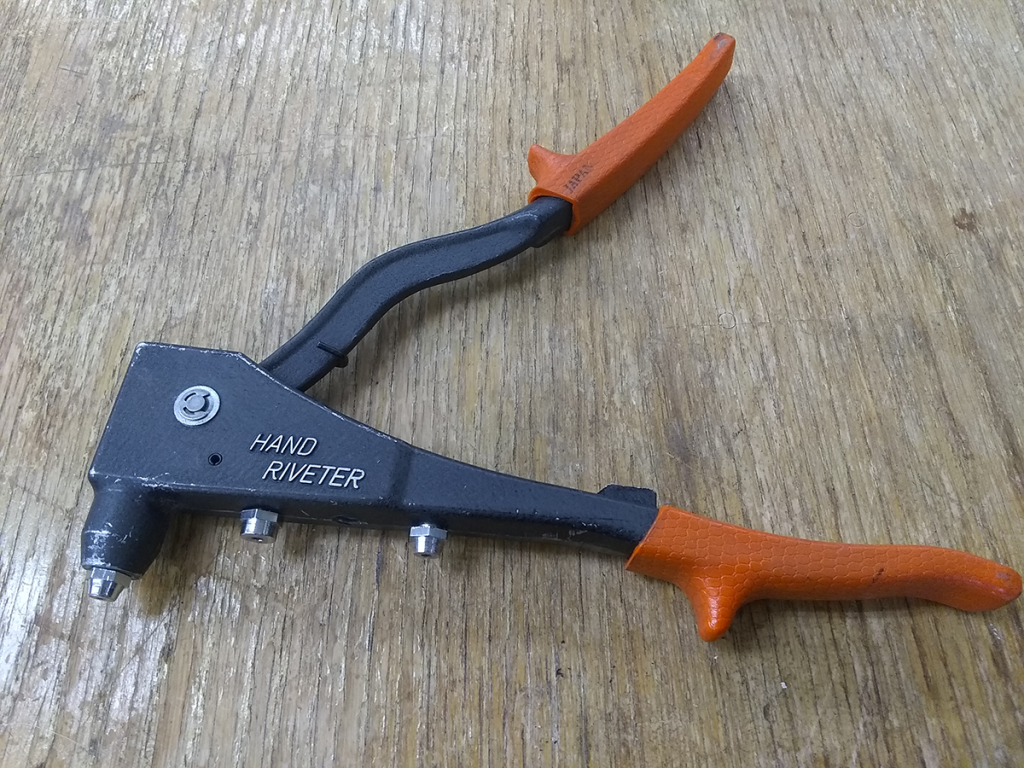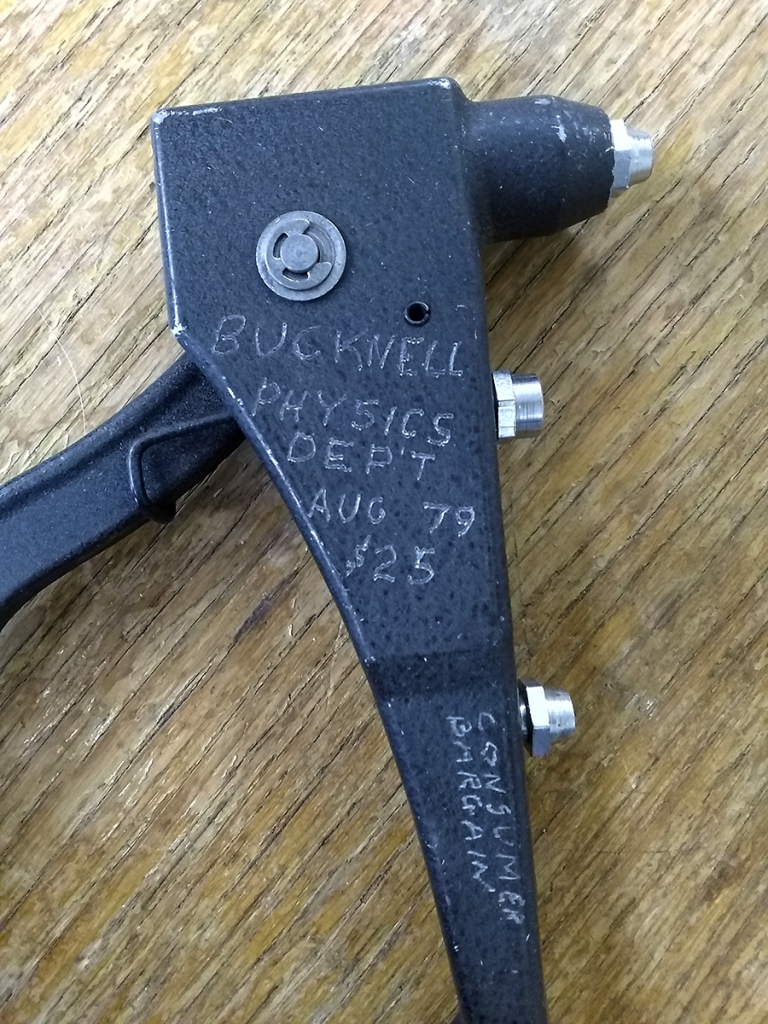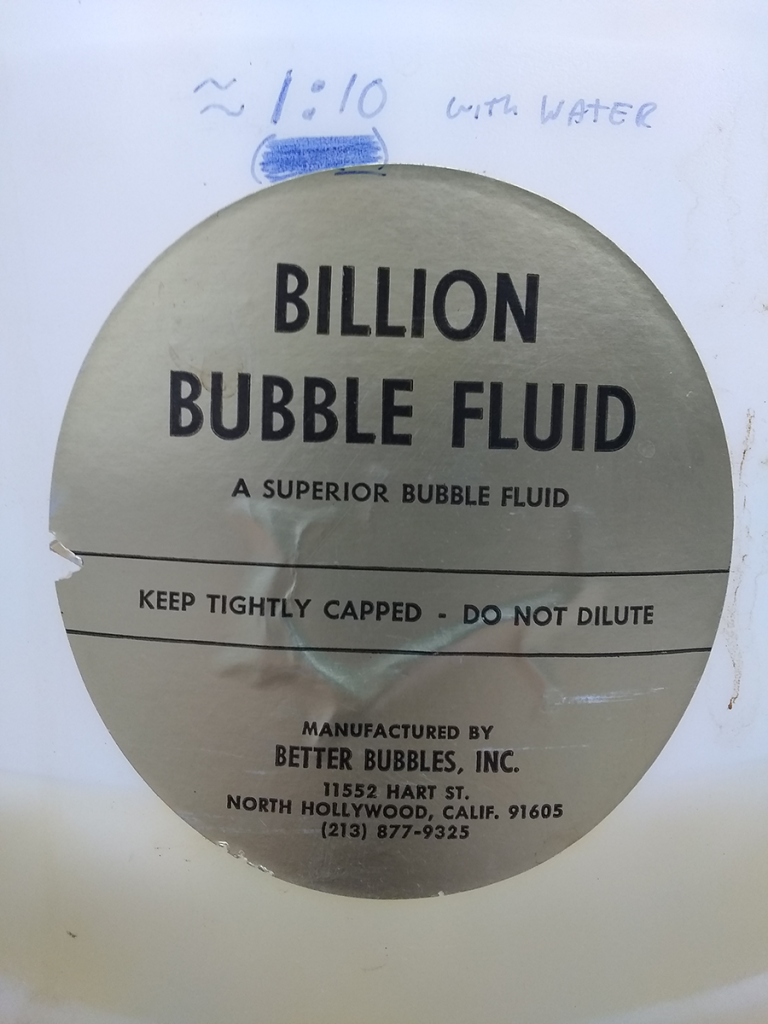
Do you need some superior bubbles? If you’re in the time window between 1961 and 1991, Better Bubbles, Inc. of North Hollywood, Calif., has got you covered. Or, if you’re like us, and you happen to have some of this stuff still around.
Better Bubbles went out of business 32 years ago, so once we’re out of this fluid, we’re out. It is, to be honest, quite superior to the usual soap bubble liquid for kids, at least as far as creating durable thin-film interference patterns. We work diligently to minimize any actual bubbles.
Of special note: the directions for use. The label says “Do Not Dilute,” which seems an odd choice as this stuff flows like thickened liquid dish soap on an icy morning. The lid asks not only for dilution, but actual shaking, which can only result in a I Love Lucy-esque eruption of unending soap bubbles. A hand-written note – clearly the tested and preferred method, and the one still in use – calls for approximately 1 : 10 dilution (vigorously underlined!) with water.
50mL per year, diluted, gently stirred, and the remainder saved for the future. Good luck, whoever needs to find a replacement. Superior bubble fluid is rare stuff.
